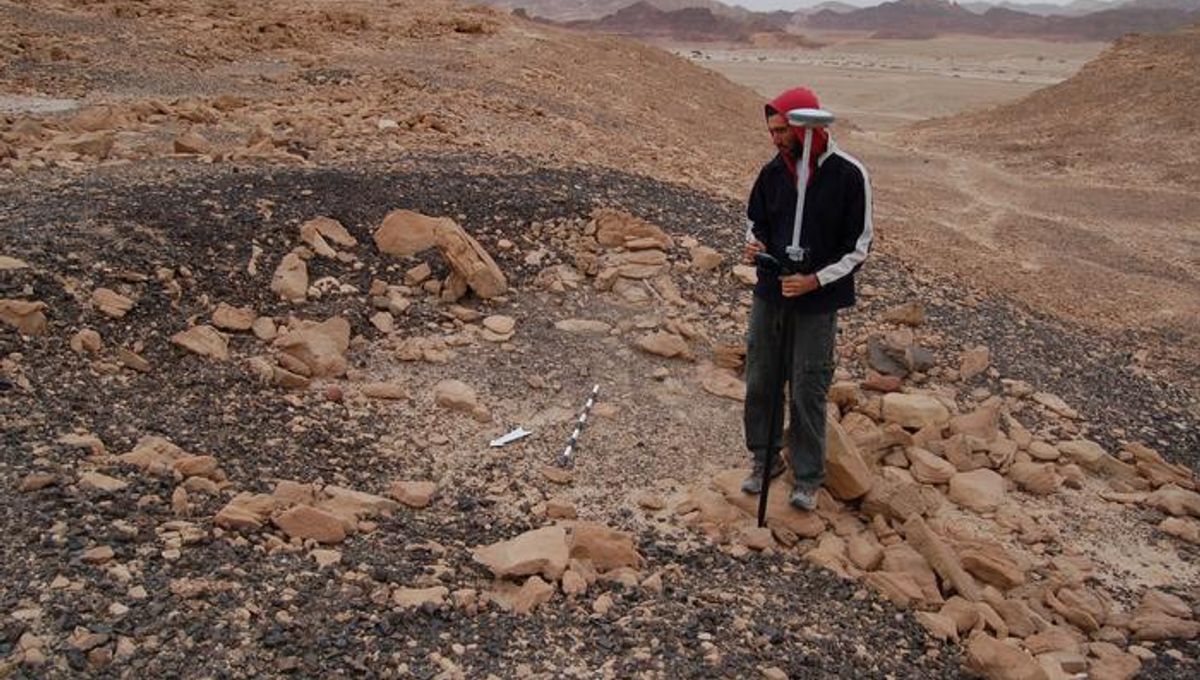
New research challenges the decades-old myth that ancient mines were environmentally hazardous sites. The researchers from Tel Aviv University show that copper production associated with King Solomon’s Mines had minimal polluting impacts on modern or ancient populations. The results upturn our understanding of early metallurgic industries and how they impacted the environment.
Since the 1990s, researchers have debated the extent to which pre-Industrial Revolution metallurgical practices impacted human health and the local environment. The scholarly community is quite torn on the subject. Some believe that the metallurgic activities in the Bronze and Iron Ages introduced new metal pollutants that are detectable at a global level, while others argue that these early industries were discrete and had minimal impacts on the environment.
In their latest study, Professor Erez Ben-Yosef and colleagues from Tel Aviv University conducted geochemical surveys at copper production sites in the Timna Valley, Israel. These mines date back to the 10th century and are regarded as one of the potential candidates for the mines associated with King Solomon – the famous monarch of ancient Israel mentioned in the Hebrew Bible and the Old Testament, who supposedly ruled at this time.
The researchers found that the environmental pollution from the copper industry was minimal and spatially limited, posing little risk to the region’s inhabitants – either those living there today or those long dead. During their work, Ben-Yosef and colleagues also reviewed past studies and found no evidence that the ancient copper production process polluted the planet.
“We inspected two major copper production sites in the Timna Valley, one from the Iron Age and King Solomon’s era and another nearby that is about 1,500 years older,” Ben-Yosef explained in a statement.
“Our study was extensive. We took hundreds of soil samples from both sites for chemical analyses, creating high-resolution maps of heavy metal presence in the region. We found that pollution levels at the Timna copper mining sites are extremely low and confined to the locations of the ancient smelting furnaces.”
According to Ben-Yosef, the concentrations of lead – the main pollutant in metal industries – drop to less than 200 parts per million within a few meters from the furnace.
“By comparison, the U.S. Environmental Protection Agency defines industrial areas as safe for workers at 1,200 parts per million and residential areas as safe for children at 200 parts per million.”
These findings challenge the old assumptions about ancient copper industries being hazardous to people and the environment.
“We demonstrate that this is not true. Pollution in Timna is very restricted spatially, and only those working directly at the furnace likely suffered from inhaling toxic fumes, while just a short distance away, the soil is entirely safe. Moreover, the match we found between the spatial distribution of copper and lead concentrations in the soil further indicates that the metals are ‘trapped’ in slag and other industrial waste – which keeps them from leaching into the soil and affecting plants or humans”, Ben-Yosef added.
The team’s findings align with several recent studies from the Wadi Faynan region in Jordan, which also indicate low levels of pollution. In one particular study, researchers examined 36 skeletons of people who lived at the mine during the Iron Age, and only three of them exhibited signs of pollution in their teeth.
“Timna and Faynan are ideal sites for this type of research because they have not been disturbed by modern mining, as happened in Cyprus for example, and thanks to their dry climates the metals in the soil are not washed away,” Ben-Yosef added.
During their examination of past literature on the subject of pre-Roman metallurgy and its impacts on a global level, the team found very little solid evidence to support the bleaker claims.
“There was a trend in the 1990s, which presented ancient copper production as the first instance of industrial pollution,” Dr Omri Yagel, a leading researcher in the current study, added. “Such statements grab headlines and attract research grants, but they unnecessarily project modern pollution problems onto the past. Moreover, the research literature tends to use the term ‘pollution’ to describe any trace of ancient metallurgical activity, and this has led to the mistaken assumption that metal industries were harmful to humans from their earliest beginnings – which is patently untrue.”
Even when metal production was scaled up to much larger levels, becoming an integral part of human civilization, it was the toxic lead industry that caused the global pollution, rather than the metals themselves.
“A 1990s study argued that traces of copper found in Greenland ice cores had traveled through the atmosphere from sites like Timna. This claim, however, has not been corroborated by any subsequent study. As researchers confronting the severe environmental challenges of our time, such as climate change, we often tend to search for similar problems in the past or assume that environmental harm has been an inevitable consequence of human activity since the agricultural revolution. However, we must be cautious. While we might label a few pieces of slag on the ground as ‘pollution,’ we should not confuse this localized waste with regional or global environmental pollution.”
The study is published in Scientific Reports.
Source Link: "King Solomon's Mines" Were Far Cleaner Than Previously Thought